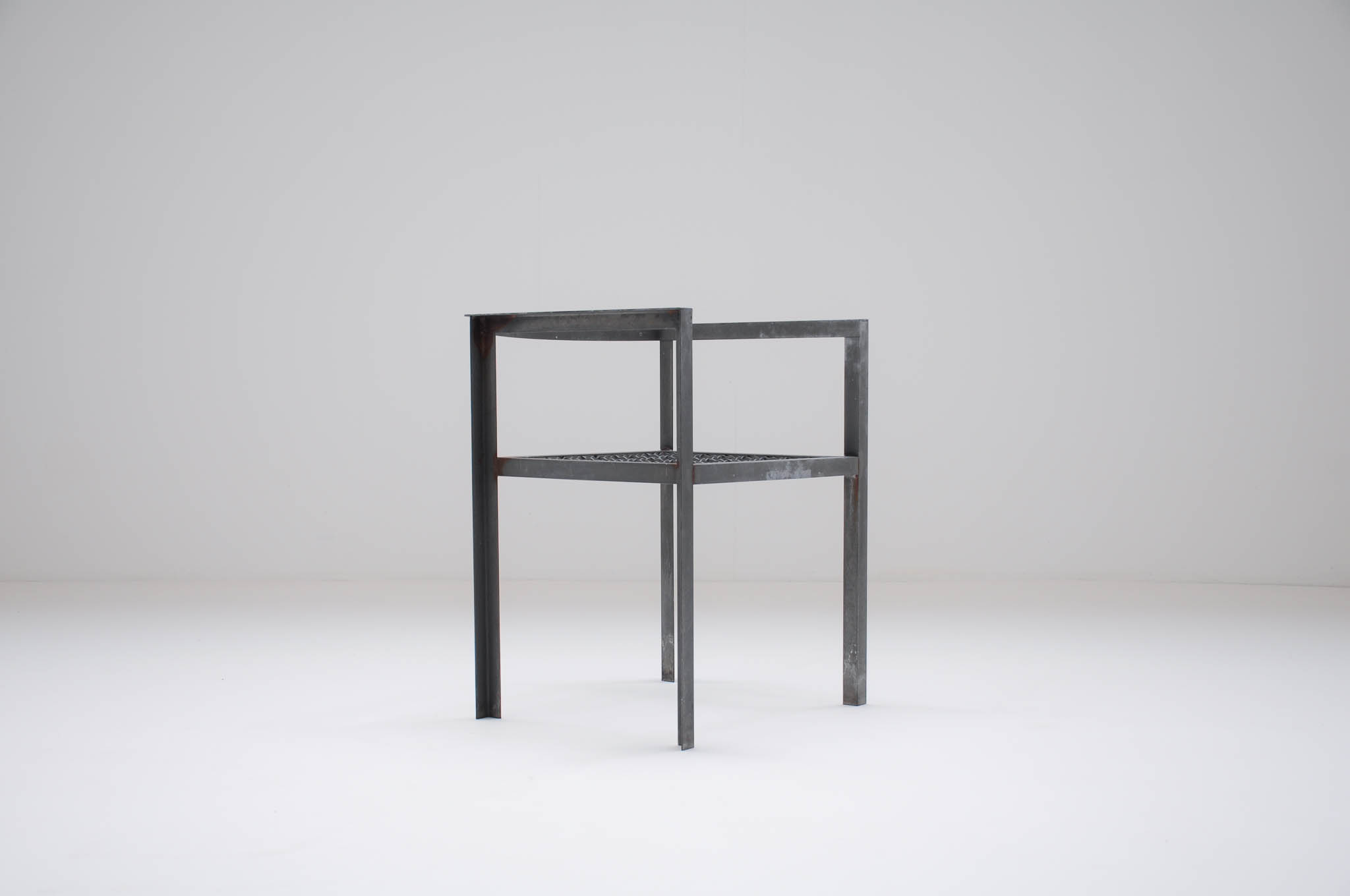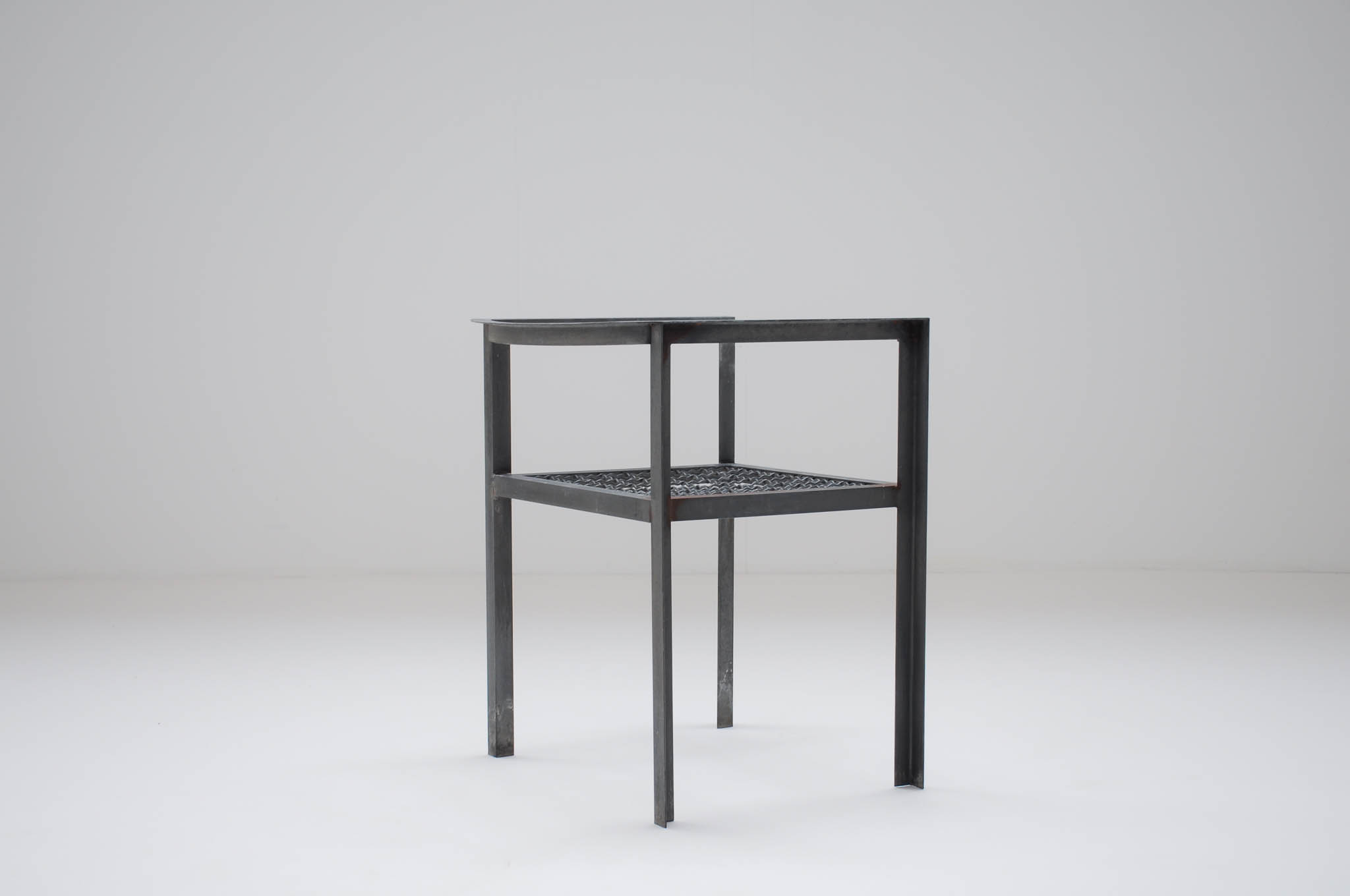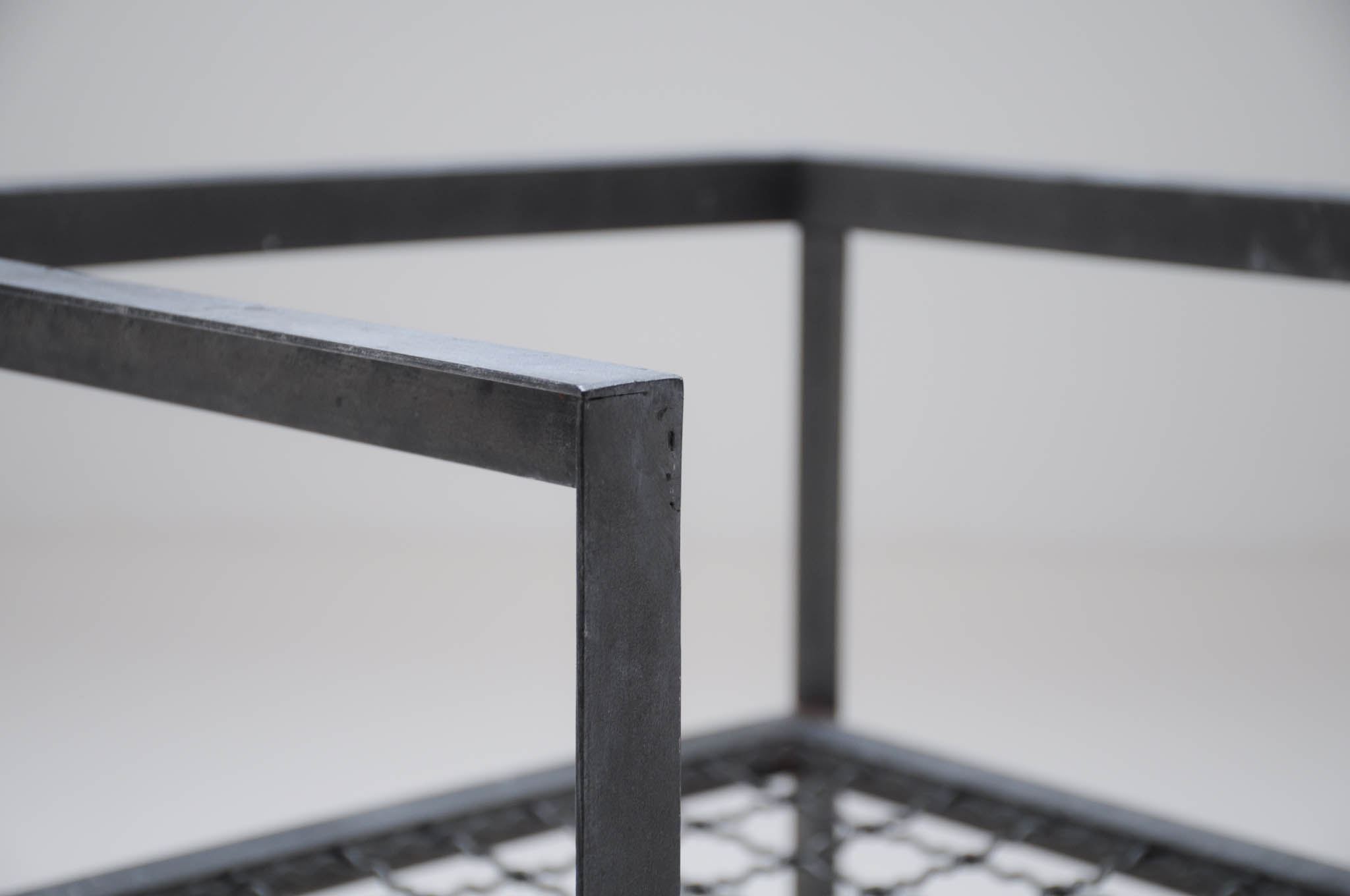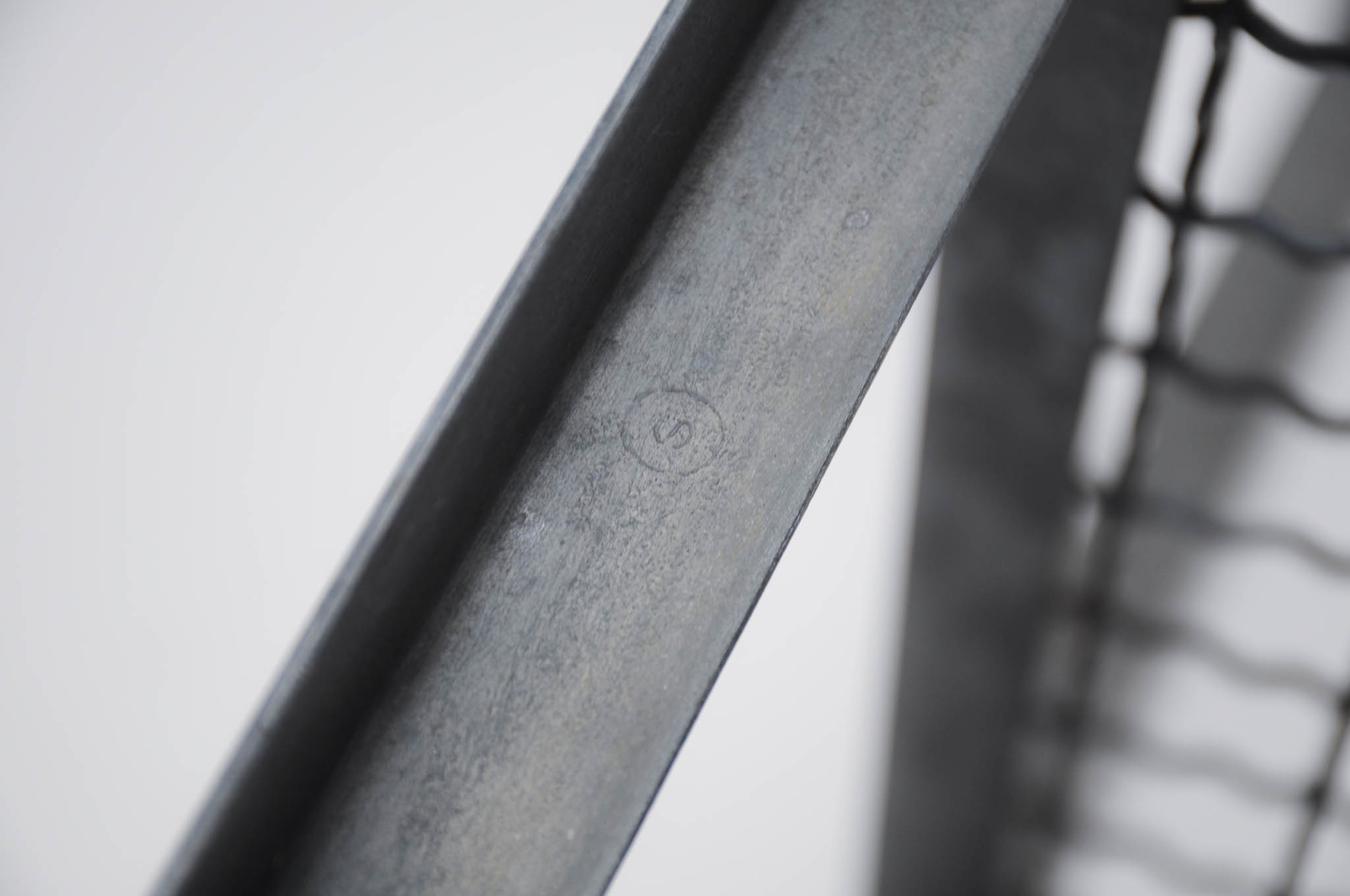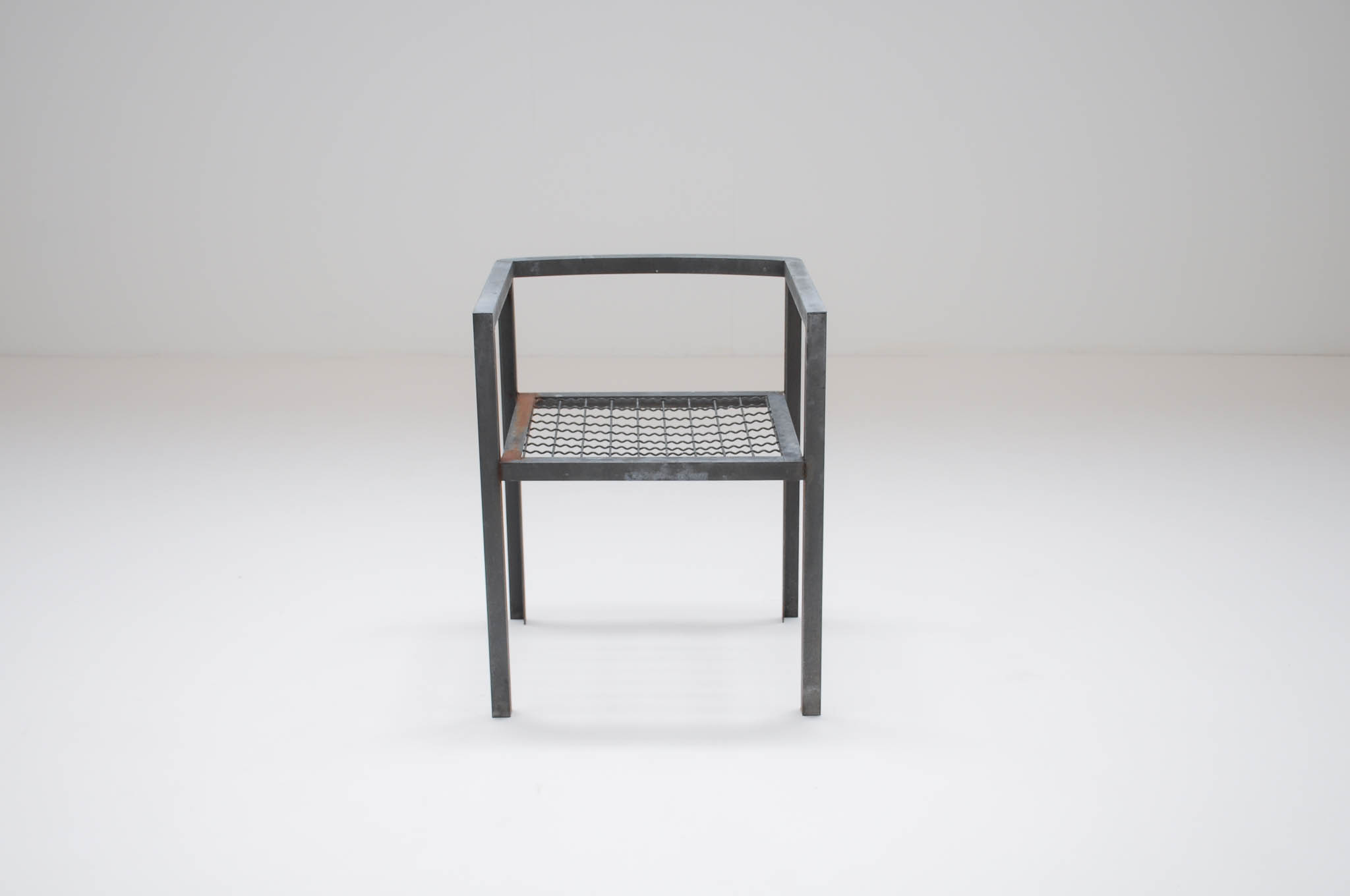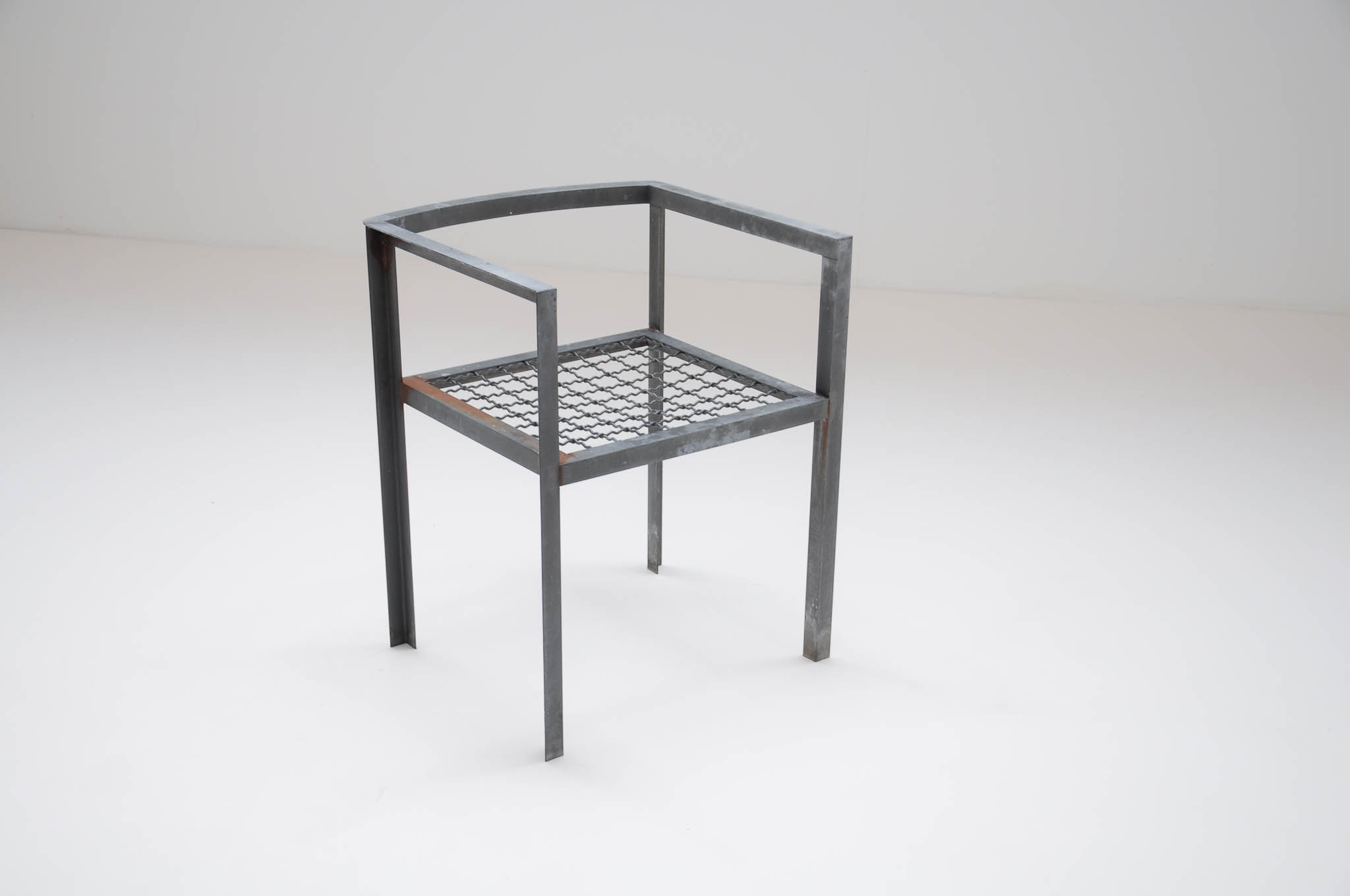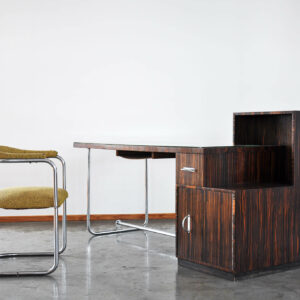Description
Magnificent minimalist side chair no.1 designed by Rei Kawakubo
Provenance: Owner of the Pyramid design Gallery Brussels
Exhibition history: 1987 Group show ‘LE DESIGN SAMOURAI’ at Pyramid design, Rue Dansaert, Brussels
Rei Kawakubo is renowned for her avant-garde fashion designs. In 1973 she established her company Comme des Garçons. Two years later, she opened her first boutique in Tokyo, and by the 1980s, she had added furniture design to her repertoire. Like her clothing designs, Kawakubo’s forms challenge established ideas of beauty.
Rei Kawakubo’s furniture designs were first made in 1984 “to create a complete environmental setting for the clothes” in the Comme des Garçons stores. Her first designs were chairs made of steel and granite, made as unique examples or in limited quantities. A few collections were created until 1990 when a now scarce catalog of her furniture designs was released. Around 1987, when this chair was produced by Pallucco, Kawakubo had opened up a short-lived Comme des Garçons furniture store in Paris that was later made into the brand’s perfume store.
In 1988, Kawakubo debuted the furniture collection in the United States for the first time at ‘City’, an avant-garde store in Chicago, and the only Comme des Garçons location in the states, in San Francisco. Barry Bursak, the owner of City, remarked that “to say these chairs aren’t comfortable isn’t accurate…they are exquisite. So when you take place in a chair, and it makes you sit a certain way, it gives you elegance. So in that sense, these chairs are extraordinary.” Kawakubo recommends, of the chairs, that they “can come to their true essence when placed in an environment that is not too pretentious.” She insisted that the chairs at City would be displayed in a big pile for the opening.
Her chair designs echo many aesthetic and conceptual touchstones of the Comme des Garçons brand in the 1980s; while Day-Glo, spandex, and “power dressing” dominated mainstream fashion, Kawakubo opted for a nearly all-black palette, austere and industrial textures, and forms that reconfigured the body.
Kawakubo has said of her designs for Comme des Garçons: “If we say these are clothes, it’s all very usual, so we said, these are not clothes. It sounds like a Zen dialogue, but it is straightforward.” The same can be said of her chairs, which cannot be categorized as simply sculptures or furniture.
These works engage with the themes Kawakubo has been working through her entire career — construction and deconstruction, the transgression of shape and material. (Source: wright20.com)



